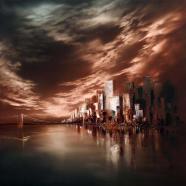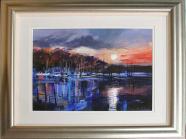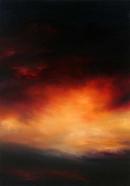 Helen grew up in a small rural village in the Midlands. After graduating with a first class honours degree in Applied Arts she moved to Cumbria, then later to York with her partner. She took with her a great love of clay that she had acquired during her studies, and after sharing studio space with a potter in exchange for hours spent looking after a shop, she set herself up as an independent artist.
Helen grew up in a small rural village in the Midlands. After graduating with a first class honours degree in Applied Arts she moved to Cumbria, then later to York with her partner. She took with her a great love of clay that she had acquired during her studies, and after sharing studio space with a potter in exchange for hours spent looking after a shop, she set herself up as an independent artist.
Having a family which was heavily involved in a broad range of arts and crafts, from painting to dressmaking, created an expectation of some kind of artistic future in Helen’s mind. She remembers being fascinated by the human form during her first experience of life drawing classes while studying for art A’ level, on a physical mechanical level, and also in the subtleties of body language – both of which have remained with her and still inform her artistic vision today.
Helen lists a varied range of inspirational artistic sources for her work, from Assyrian friezes and cave art to the drawings of Klimt and the clay maquettes of Rodin. She also owes a debt to the rocks around and up the many mountains she has climbed, enjoying both their aesthetics and their place in nature and history. These and many other influences go towards creating the ideas behind her sculptures.
Helen keeps a sketch/scrap book of ideas, inspiration and research, and the pieces develop from this; it may be a mood, a feeling or simply a pose that really sparks her imagination. She starts with sketches on paper and with wire – what she describes as 3D drawing – then begins to experiment with clay and glaze, altering and evaluating along the way until she is happy with the total concept. The pieces are eventually built from flat pieces of clay, curled around, joined and built up slowly in layers to form the figure; each one is made entirely by hand making them unique. Once constructed, they are dried thoroughly, fired, then glazed and re-fired to their finished state.
‘My work is concerned with the changes we go through as individuals, those personal rites of passage that connect us all. Although I am fascinated by these spiritual notions of the human condition, I am grounded by the form and physical reality of the body’s construction. I am particularly interested in the hands and feet which I see as actual agents of change, they grasp, stand, support, hold, drop, and run. People can look at my work and attribute their own memories and emotions to individual pieces. This connection and dialogue with others is very important to me, as we are all participating in the same complex scheme, and people react to one another and change.’


















































































